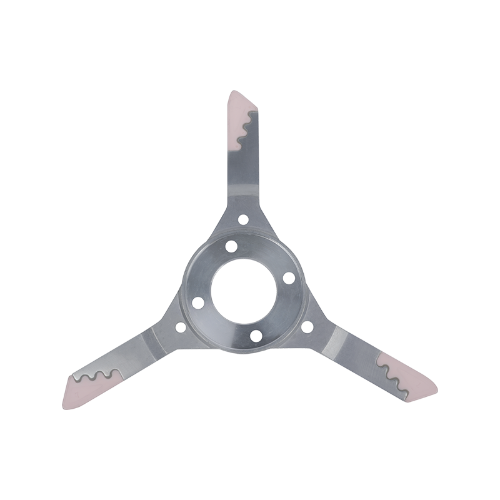
In the global textile industry, the name Barmag has long been associated with technological progress, durability, and precision. These machines are the lifeline of many textile mills, driving large-scale manufacturing of synthetic fibers and yarns. From apparel fabrics to industrial textiles, their contribution is indispensable. Over the decades, their role in shaping modern production has become undeniable, particularly through innovations in texturing and winding machinery.
Barmag texturing machines are renowned for converting smooth, synthetic filament yarns into textured yarns. This transformation enhances bulk, elasticity, and comfort, making fabrics suitable for sportswear, upholstery, and carpets. Meanwhile, winding machines provide the critical step of preparing yarns for distribution and further processing, ensuring efficiency and standardization in textile operations.
The performance of these machines is directly tied to profitability. Any downtime due to malfunction can lead to significant financial consequences. Therefore, regular upkeep and Barmag repair practices are vital not just for machine longevity but also for maintaining consistent production output. This article explores common problems, troubleshooting methods, maintenance strategies, and the professional support essential for ensuring reliable performance.
Operating high-precision equipment such as Barmag machines inevitably involves occasional issues. Identifying symptoms early and responding effectively minimizes downtime.
Mechanical failures often appear as irregular noises, vibrations, or visible wear.
Bearing Failures: Bearings operate under extreme stress. Grinding or squealing noises, excessive heat near housings, and noticeable vibrations often indicate problems. Correct lubrication and alignment should be checked first. Persistent noise often means replacement is needed.
Gearbox Problems: Essential for torque transmission, gearboxes may develop oil leaks, emit clunking noises, or overheat. Low or degraded oil signals internal wear and calls for expert inspection.
Drive System Malfunctions: Motors, belts, and pulleys are prone to slippage and inefficiency. Symptoms include squealing belts or underperforming motors. Belts must be checked for cracks, correct tension, and signs of wear.
Electrical failures are more challenging and often require specialists.
Sensor Failures: With sensors controlling speed, tension, and position, faults may cause abrupt halts or error codes. Loose connections or damaged wiring may be fixed visually, but advanced diagnosis requires multimeters.
Wiring Problems: The vibration-heavy environment can fray insulation or loosen terminals, leading to flickering indicators or partial failures.
Control Panel Malfunctions: Symptoms include blank displays, unresponsive buttons, or ambiguous error codes. Sometimes a reset works, but persistent issues require detailed inspection.
These systems are crucial for tension and clamping functions.
Pneumatic Leakage: Indicated by hissing sounds or weak responses. Soap solution tests can locate leaks; damaged seals or tubing should be replaced.
Hydraulic Pump Failures: Whining noises and sluggish responses point to low fluid or cavitation. Fluid checks and leak inspections are essential.
Valve Malfunctions: Failure to open or close properly results in lock-ups. Cleaning debris can help, but replacement is often necessary.
Preventative maintenance is the most cost-effective strategy to extend machine lifespan and ensure smooth performance.
Operators should routinely clean dust, debris, and fibers from sensitive areas, lubricate designated points, and perform quick visual checks for leaks, loose wires, or strange noises.
Technicians should check fluid levels, tighten bolts affected by vibration, and inspect belts for wear. Correct tension avoids costly bearing or motor stress.
More advanced inspections involve recalibrating sensors, assessing wiring integrity, and testing emergency systems. Ensuring operator safety devices function properly is non-negotiable.
Using genuine parts during Barmag repair ensures compatibility and precision. Non-original components risk premature failures, inefficiency, and costly breakdowns.
| Maintenance Frequency | Key Actions | Purpose |
|---|---|---|
| Daily | Cleaning, lubrication, quick checks | Prevent debris-related damage |
| Weekly | Fluid checks, bolt tightening, belt inspections | Minimize wear and vibration issues |
| Monthly | Sensor calibration, wiring inspection, safety tests | Ensure accuracy and operator safety |
Although some issues require professional expertise, understanding basic repair steps enhances confidence and reduces downtime.
Tools and Materials: Genuine bearing, puller set, wrenches, torque tools, lubricant, PPE.
Safety: Machines must be powered down and locked. PPE like gloves and goggles are mandatory.
Steps:
Proper documentation of repairs helps track performance history and simplifies future troubleshooting.
Professional expertise is critical for handling complex repairs. Choosing the right service ensures efficiency and reliability.
Specialization in Barmag machinery, problem-solving ability, attention to detail, and professionalism are non-negotiable traits.
Certified technicians with direct training offer confidence and minimize downtime. Experience with varied issues ensures faster problem-solving.
Repair costs depend on machine type, issue complexity, parts required, and labor.
| Factor | Low-Cost Scenario | High-Cost Scenario |
|---|---|---|
| Machine Type | Simple winding unit | Advanced texturing machine |
| Issue Complexity | Sensor replacement | Gearbox overhaul |
| Parts Required | Single bearing | Multiple electronic boards |
| Labor Rate | Local technician | Specialized certified expert |
The textile industry’s reliance on precision and speed makes the performance of Barmag machines indispensable. Regular maintenance, proactive troubleshooting, and professional Barmag repair services ensure smooth operations, consistent product quality, and reduced downtime.
Investing in genuine parts, certified technicians, and a strict maintenance schedule is not simply about fixing machines—it is about safeguarding profitability and ensuring sustainable production. With the right strategies, textile manufacturers can extend the life of their machines, maximize efficiency, and protect their investments for the long term.
